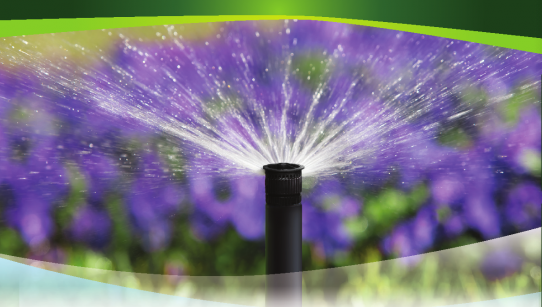Unveiling Opportunities in livestock management with IoT Advancements
Explore how IoT sensors transform livestock management, optimizing efficiency and sustainability.
In the dynamic landscape of modern agriculture, the adoption
of innovative technologies has become integral to efficient and sustainable
farming practices. This blog dives into the limitations of manual monitoring
and data collection in livestock management and shows the transformative role
of IoT sensors in overcoming these challenges.
Limitations of Manual Monitoring and Data Collection
Manual data collection in livestock management introduces
several challenges that can impede the overall effectiveness of farming
practices. Firstly, the inherent potential for errors in manually tracking the
health and behavior of livestock compromises the accuracy of the data gathered.
Furthermore, the manual collection and management of demands
a significant investment of valuable time from farmers, diverting their
attention from other essential activities on the farm. Consequently, farmers
may inadvertently miss crucial information creating a gap in their
understanding of the livestock's health and conditions.
Manual methods primarily provide historical data, lacking
the crucial element of real-time insights. Without immediate access to current
information, farmers face challenges in implementing timely interventions to
address changing conditions or emerging issues. This limitation compromises the
ability to respond promptly to potential threats to livestock health or other
operational needs.
The resource-intensive nature of employing labour for
continuous monitoring further exacerbates the challenges faced by farms. The
allocation of human resources to repetitive monitoring tasks not only increases
operational costs but also limits the workforce available for more strategic
and value-added activities.
Precision agriculture demands real-time insights, and
technology, including IoT sensors, facilitates data-driven decision-making for
enhanced efficiency. To meet global food demands, technological advancements in
livestock management contribute to increased productivity and profitability.
Moreover, technology supports sustainability goals by reducing resource
wastage, optimizing inputs, and minimizing environmental impact, aligning with
modern agricultural practices.
Introduction to Various Types of IoT Sensors Used in Livestock Management:
RFID and GPS for Precision Tracking:
RFID is a foundational element in modern cattle monitoring systems. Each individual cow is equipped with an RFID tag, a small device containing a unique identifier. These tags can be attached to the ears or other parts of the cattle. The RFID tags use radio-frequency signals to communicate with RFID readers or scanners. As a cow moves within the range of an RFID reader, the reader captures the unique identifier from the RFID tag. This allows farmers to track the movements and activities of each cow individually. The data collected from RFID tags forms the basis for creating comprehensive profiles for every member of the herd. GPS-enabled collars equipped with small GPS devices can pinpoint the precise location of individual cows in real-time. The GPS component provides accurate geographic coordinates, allowing farmers to track the movement and location of cattle within a specified area. Farmers can monitor the grazing patterns, identify preferred grazing spots, and ensure that the herd is utilizing the pasture optimally. The data collected through RFID and GPS technologies allows farmers to understand the grazing patterns and preferences of individual cows. Farmers can make informed decisions about pasture management, ensuring that each animal receives adequate nutrition.
IoT-Based Health Monitoring Solutions:
IoT-Based Health Monitoring Solutions, exemplified by companies like Cowlar, revolutionize livestock management by leveraging wearable sensors to provide continuous, real-time data on vital signs, temperature, and activity levels of individual cows. These wearable devices eliminate the need for manual health assessments and offer a proactive approach to disease detection. Through consistent monitoring, farmers gain insights into the well-being of their herd, enabling early identification of potential health issues. This early detection is critical for implementing timely interventions and preventing the spread of diseases within the herd. The system's ability to generate immediate alerts empowers farmers to take prompt actions, contributing to the overall improvement of herd health and reducing the impact of potential health challenges.
Smart Ear Tags for Comprehensive Insights:
Smart ear tags, attached to the ears of individual cows, incorporate accelerometers for monitoring activity, temperature sensors for health assessments, and in some cases, GPS capabilities for tracking movement. The data collected from these tags is transmitted wirelessly, offering farmers a holistic understanding of their herd. Accelerometers provide insights into overall activity patterns, enabling the identification of signs of distress or illness. Temperature sensors contribute crucial information for detecting fevers or stress indicators. The inclusion of GPS capabilities adds another layer of understanding, aiding in optimizing grazing patterns and pasture utilization. This information, transmitted in real-time, allows farmers to make informed decisions related to breeding, nutrition, and overall herd management. The synergy of multiple sensors in smart ear tags empowers farmers with a comprehensive tool for enhancing the health, well-being, and productivity of their cattle herds.
Feed and Water Intake Sensors:
Sensors monitoring feed and water intake offer essential insights into the consumption patterns of individual animals. These sensors track the amount of feed consumed by each animal and monitor water intake. The data provided by feed and water intake sensors is instrumental in efficient resource management. Farmers can ensure that each animal receives the appropriate nutrition, preventing overfeeding or underfeeding. In terms of agriculture, the benefits of feed and water intake sensors are multifaceted. Firstly, these sensors contribute to efficient resource management. By tracking consumption patterns, farmers can optimize the allocation of feed and water resources, ensuring that each animal receives the appropriate nutrition without wastage. This not only improves the overall efficiency of agricultural operations but also reduces costs associated with excess feed or water usage. Changes in consumption patterns also serves as indicators of potential health issues.
The limitations of manual livestock monitoring, ranging from
potential errors to resource intensity, underscore the necessity for
technological intervention. The integration of IoT sensors, exemplified by RFID
and GPS for precision tracking, IoT-based health monitoring solutions, and
smart ear tags, marks a huge advanvcement in livestock management. These
technologies not only address the challenges posed by manual methods but usher
in a new era of precision agriculture. From optimizing grazing patterns to providing
real-time health insights, these innovations collectively contribute to
increased efficiency, sustainability, and profitability in modern livestock
farming practices.











No comments yet